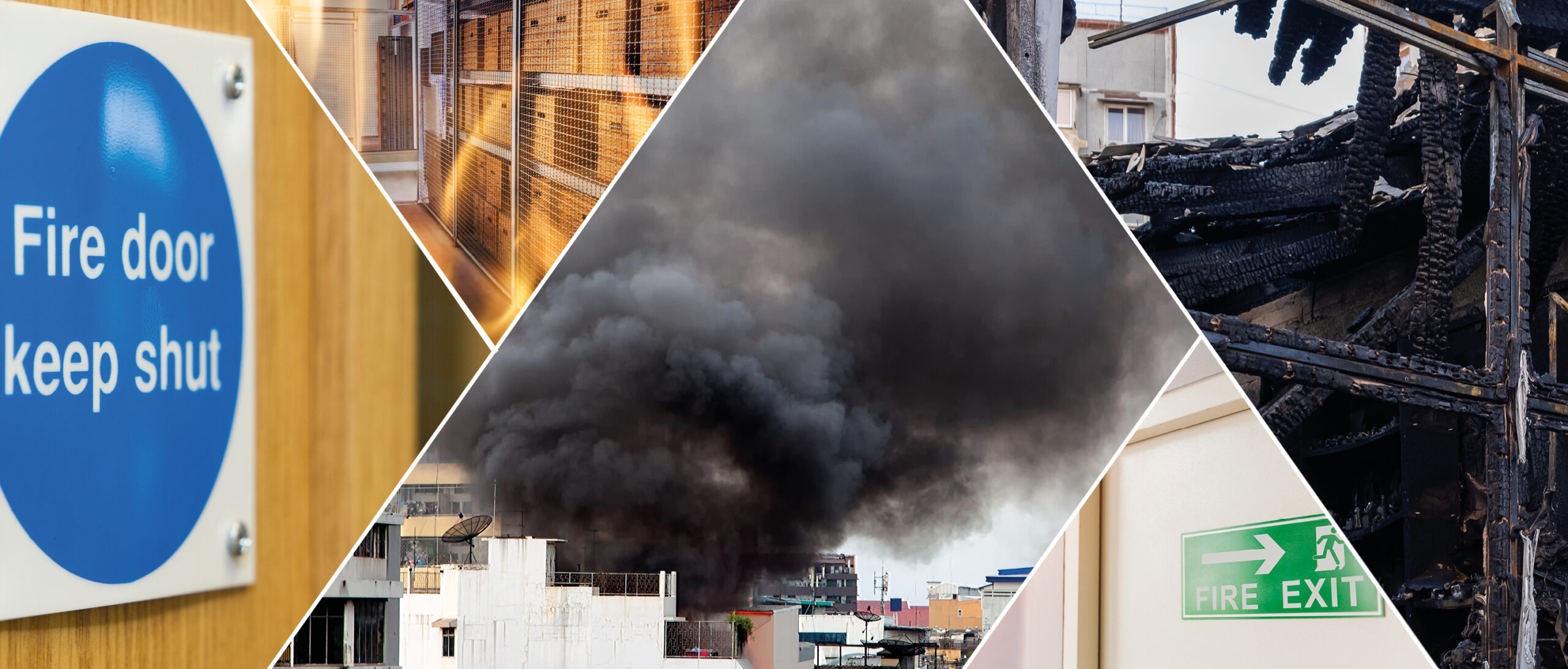Following the Grenfell Tower disaster in June 2017 the Government set up an inquiry to understand what happened and how to prevent a repeat of the tragedy. The majority of the recommendations made by retired judge Sir Martin Moore-Bick have been placed into law. These have been phased in, and intend to increase public safety, both at home and in the workplace.
The first phase was to introduce the Fire Safety Act, which took place in 2021. This was followed by the Fire Safety (England) Regulations a year later. The third phase was to introduce the Building Safety Act. This makes a series of amendments to the existing Regulatory Reform (Fire Safety) Order 2005. It also aims to improve fire safety in any building regulated by the FSO.
For businesses, this latest updates to legislation – which came into effect in October – brings in some very important changes to how they must approach fire safety. The overall aims are:
- To improve cooperation and coordination between what are known as ‘Responsible Persons’ (RPs)
- An increase in requirements relating to the recording and sharing of fire safety information. This intends to ensure a building has a continual record of the life of the building
- To make it easier for enforcement authorities to take action against non-compliance
- Providing residents of a building to have access to comprehensive information about fire safety within the property
Who is responsible for fire safety?
Legally, the person responsible for fire safety is whoever employs the staff within the company. As this is often the business itself, the company is deemed to be a legal person. So, in a typical retail location the responsible person will not be the manager of the store, or even someone senior in the business. It will be the company itself. They are the ‘person’.
What is the ‘person’ responsible for?
An important part of the updates is to help all parties understand where their responsibilities lie. We’ll use an example of an outlet located within a shopping centre where the landlord looks after all fire safety measures. The landlord will have to ensure all systems are working and the facilities are safe for anyone working or visiting. But, tenants are also responsible. They must confirm the landlord has installed and maintained the fire and safety systems in place. So, it falls on both tenant and landlord to make sure the property complies with the Fire Safety order in place. This means both parties need to work more closely together to make sure the premises are safe for staff and customers.
Employee liability
As a business is recognised under law as the responsible person, it is not possible to move that burden to an employee. So, if there is an offence under the Fire Safety Order, the business cannot claim an employee is responsible.
The penalties for contravening fire safety legislation can be severe, including no limit on fines. So it is vital retailers take steps to ensure they meet their obligations.
Changes to fire safety in your retail locations
The legislation updates make it clear that a retailer must undertake certain actions in order to comply with a Fire Safety Order.
Risk Assessment
First, it is imperative that a risk assessment is undertaken. For retailers, who does this depends on the size risk level. For a property with a floorspace less than 280m², such as a bar or boutique, the Home Office has published advice for owners or occupiers to undertake the assessment. A larger property can be assessed inhouse, but these are subject to more detailed checks. So the owner or occupier will usually engage a consultant or third party to conduct the assessment.
Competence
Importantly, anyone undertaking the assessment must be competent and have experience in performing this task for the type of property. So, an assessor who inspects residential flats would not be deemed to be suitable to inspect a retail location. The new advice also gives advice on who should undertake safety checks. It recommends that you select an assessor who is certified by a third party body to perform the inspection. Simply having previous experience in the fire sector does not qualify a person as a fire safety specialist.
Emergency lighting
Where a retailer has emergency lighting within their property, regular checks must be made. These include:
- A monthly ‘flick’ test where the lighting is checked to ensure it illuminates on demand
- An annual duration test, where the emergency lighting is operated for a minimum time to show it can guide people to safety
Recording fire safety features
As noted earlier, one of the amendments to the current legislation is to have a record of the fire safety within a property. This effectively mandates a regular testing regime is put in place as the results must be documented and available for review when requested.
So, the updates to fire safety legislation makes it vital you take immediate action to:
- Set up a formal line of communication with any landlords you rent retail properties
- Make sure all parties agree on how regular checks and assessments are made and recorded
- Prepare the means by which all tests and assessments are recorded
- Ensure your staff receive training to understand the fire safety systems in place in their workplace and their role in the event of a fire
- Make sure your fire risk assessment is correct and up-to-date – and where required source a suitable person or company who can undertake this for you
- Begin undertaking checks of fire and safety systems and record their operation effectiveness
Meeting changing fire safety legislation
As you can see this does mean the need to maintain fire safety systems will become a regular and ongoing task that may take up time and resources. This is especially so in the case of your emergency lighting. Keeping on top of emergency lighting can be very time-consuming, particularly in finding and resolving broken lights or faulty wiring. Maintaining emergency lighting can also eat heavily into your budget as it ages. Lights begin to fail, vinyls fade and peel and housings become worn and obsolete.
That’s why we recommend you consider installing a wireless emergency lighting system. Such a system is far easier to manage. This is due to the use of long-life batteries and a central dashboard giving you complete overview of all installations. A wireless lighting network is also very easy to install. It needs no additional or relocated power sockets. That makes the solution a real benefit to you if a fire inspection suggests moving lights to improve visibility and safety.
If you are at all concerned about how the updates in fire safety regulations may affect your sites, Store Maintenance is here to help. With our network of vetted contractors we can provide expert advice and guidance to make sure you don’t fall foul of the new legislation – and improve your emergency lighting too. We’re here to keep you, your staff and your customer safe. So get in touch today to talk about fire safety and your properties.









